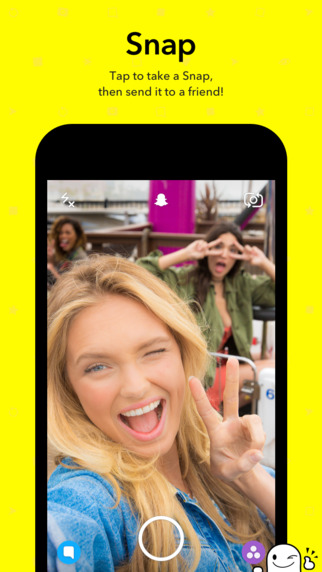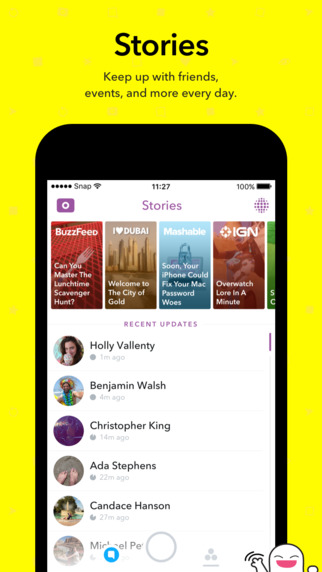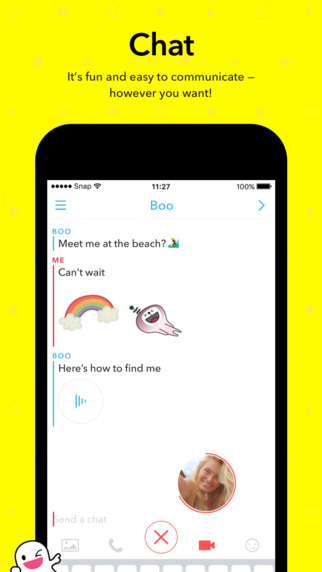Articles and News
Snapchat: Storytelling for the Luxury Jeweler | June 29, 2016 (0 comments)

White Plains, NY--Snapchat is by far the most popular social media platform for teens and young adults, having recently outpaced Instagram, and leaving Twitter and Facebook far, far behind. This is important to the luxury jeweler who wants to reach customers while they’re actively forming their own personal sense of style and fashion aspirations – forces that will guide their purchasing decisions for their entire life.
Understanding Snapchat. Snapchat is an app that allows user share photos and videos, called Snaps that last for only 10 seconds. The latest updates gives Snapchat users even more features for enhancing their videos and photos with stickers, filters, text and emojis. Snaps can be collected into Stories, which last for 24 hours. Users can follow Stories by adding the username of the Stories poster to their friend’s list.

The Snapchat Aesthetic. Luxury brands that found Instagram’s artistic, refined culture to be a comfortable fit are often thrown by Snapchat’s less polished aesthetic. The Snapchat audience prioritizes authenticity; Burberry has actually attracted criticism because their Snaps are too studio-perfect.
The Audience for Stories. While the largest contingent of Snapchat users are between the ages of 13-24, there are several important secondary audiences. In January, the New York Times reported that more than 90 percent of parents report taking steps to oversee their children’s social media activities; nearly 40 percent use monitoring software that allows them to see what their kids see online. These concerned parents have significantly more purchasing power than their children; continual exposure to their offspring’s brand of choice can streamline the purchasing process when it’s time to buy gifts for milestone birthdays, graduation, proms, and other special events. Millennials are also enthusiastic Snapchat users; according to a recent eMarketer report, 30% report using the app regularly.
Creating Successful Stories. Stories consist of four to six Snaps, shared together as a group. In the fashion and apparel industry, Stories often center around events such as runway shows or the debut of a new collection. Another popular type of Stories centers on giving users a behind the scenes view of the brand. Everlane has been extremely successful sharing this type of content; the fashion brand lets users know where their products come from, how they’re made and more.

For the retailer, behind-the-scenes content can communicate elements of the store's personality and the type of experience a shopper can expect. Lighthearted, playful Stories work best: use fun captions to tell the tale of an engaged couple picking wedding bands or friends getting ready for a big night out trying on fashion looks. Additionally, use Stories to highlight jewelry creation, showing a custom piece coming to life on the workbench or highlights from a buying trip or luxury watch factory tour.
Celebrity content is popular on Snapchat, but so too are Stories featuring everyday people wearing looks well in the real world. Many Stories integrate a call to action that invites the viewer to further engage with the brand, such as a link to view an entire collection on a website or a coupon code to prompt impulse buying.
The Challenge of Ephemerality. Assets created on Snapchat cannot be saved for a prolonged period of time; this introduces a complicating element if your own operating parameters involve a lengthy approval process for creative materials. The workarounds for this include pre-scripting Stories and then delegating their creation to a trusted team member responsible for ensuring all shared material is brand appropriate.
Stories are only available on Snapchat for 24 hours. That is a remarkably short period of time to connect effectively with everyone who may be interested in your content. For that reason, it is a good best practice to archive your best performing Snapchat Stories on your website, where people can access them later.
Ideal Posting Frequency. The ideal posting frequency for Snapchat has not yet been determined. Some brands post only during events; Wimbledon, for example, has an intense Snapchat presence during tournaments yet is silent for the remainder of the year. Other brands choose a much more aggressive schedule, sharing content several times a week. Beginning with a less is more approach allows brands to try Snapchat out without making a major commitment of resources; if the platform proves to have traction for your brand, you can certainly expand the frequency of posting.

Assessing the Impact of Snapchat. At this time, Snapchat has relatively few metrics. Available information you can use to measure your brand’s effectiveness include number of followers; total unique views, which details how many people opened the first Snap in a story; total Story Completions, which tells you how many people saw the last Snap in a Story; Completion Rate, a percentage detailing how many people that started a Story saw it through to the end; and Screenshots, which records how many people took a screenshot image to save your Snap.
Jennifer Shaheen is the Technology Therapist. For nearly 20 years, she’s been putting her digital marketing expertise and entrepreneurial acumen to work, helping retailers and brands of every size take their businesses to the next level. Jennifer is a national presenter and moderator for Entrepreneur and SCORE, the nation’s most valuable resource for small business, as well as a recurring guest on MSNBC’s Your Business and contributing author to Bank of America’s Small Business Market Place. A dynamic speaker and educator, working with the gift and jewelry industry, including appearances at Leading Jeweler’s Guild, Polygon, American Gem Society Conclave, and JCK Las Vegas. Find out more by visiting www.technologytherapy.com.







